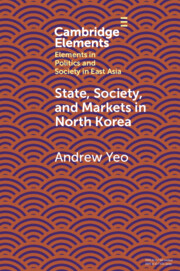Element contents
State, Society and Markets in North Korea
Published online by Cambridge University Press: 21 September 2021
Summary
- Type
- Element
- Information
- Online ISBN: 9781108888592Publisher: Cambridge University PressPrint publication: 04 November 2021
References
- 15
- Cited by

